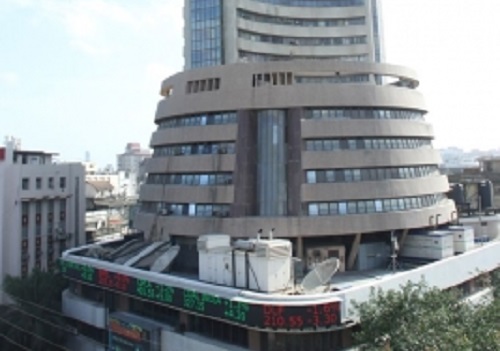Copper trading range for the day is 850-861 - Kedia Advisory

Follow us Now on Telegram ! Get daily 10 - 12 important updates on Business, Finance and Investment. Join our Telegram Channel
Gold
Gold prices surged by 0.44% yesterday, reaching 70725, buoyed by a weakening dollar following the US Federal Reserve's decision to maintain its policy rate and slow the pace of quantitative tightening starting June 1st. Fed Chair Powell's remarks during the press conference, indicating an unlikely hike in the next move despite inflation concerns, further supported the precious metal's rally. Additionally, the US employment cost index surpassed expectations, signaling robust wage growth and diminishing expectations of Fed rate cuts. Global gold demand, as reported by the World Gold Council, exhibited resilience, growing by 3% annually to 1,238 metric tons in the first quarter, marking the strongest start to a year since 2016. Despite India's 8% increase in gold demand in the March quarter, recent price rallies pose a challenge, potentially leading to the lowest annual consumption in four years, according to the WGC. The forecasted demand for 2024 stands between 700 and 800 metric tons, with the outcome likely skewed towards the lower end if prices continue to surge. From a technical perspective, the gold market reflects a bullish sentiment, with an observed increase in open interest and prices climbing by 310 rupees. Key support levels at 70430 and 70140 are crucial markers for potential downside movements, with a breach possibly signaling further declines. Conversely, resistance levels at 70965 and 71210 present barriers for any potential upward movement, warranting close monitoring for breakout opportunities. Investors are likely to keep a close eye on developments surrounding inflation, monetary policy decisions, and global demand trends to gauge the metal's future trajectory amidst evolving market conditions.
Trading Ideas:
* Gold trading range for the day is 70140-71210.
* Gold gains as the dollar dipped after a flurry of U.S. economic data
* Fed held its policy rate steady and announced it will slow its pace of quantitative tightening beginning June 1st.
* India's gold demand in the March quarter rose 8% from a year ago - WGC
Silver
Silver prices exhibited a modest gain of 0.47%, closing at 81227, as investors exercised caution amidst expectations of sustained higher interest rates by the US Federal Reserve. The Fed's decision to maintain its policy rate and slow quantitative tightening from June 1st, coupled with Chair Powell's remarks hinting at a dovish stance, influenced market sentiment. However, concerns persisted over inflation risks and limited prospects for rate cuts this year, exacerbated by a robust 1.2% increase in the employment cost index for Q1, signaling wage pressures. Economic data painted a mixed picture, with US consumer confidence deteriorating more than anticipated in April, according to the Conference Board. The consumer confidence index declined to 97.0 from a revised 103.1 in March, reflecting wavering sentiment amidst economic uncertainties. Meanwhile, the Silver Institute projected a 17% rise in the global silver deficit to 215.3 million troy ounces in 2024, driven by a 2% increase in demand fueled by robust industrial consumption. Despite a 1% decline in total supply, the structural deficit in the silver market persists, marking the fourth consecutive year of deficit. The industry association highlighted the resilience of silver demand across various sectors, including jewellery, electronics, electric vehicles, and solar panels, as well as its role as an investment asset. From a technical standpoint, the market witnessed fresh buying, with open interest increasing by 1.3% to settle at 24,001 contracts. Despite a significant increase of 376 rupees in prices, silver found support at 80860, with potential downside testing at 80495. Conversely, resistance is anticipated at 81540, with a breakthrough potentially leading to a test of 81855.
Trading Ideas:
* Silver trading range for the day is 80495-81855.
* Silver gains as investors turned cautious ahead of the US Federal Reserve’s policy decision
* U.S. consumer confidence deteriorated by much more than expected in the month of April.
* Silver faces the 4th year of a structural market deficit
Crude oil
Crude oil faced a significant downturn, dropping by -3.16% to settle at 6622, driven by a surge in US stockpiles and easing geopolitical tensions in the Middle East. The unexpected increase in US crude inventories, reported by the EIA Petroleum Status Report, exceeded market expectations and reversed the previous week's decline, putting downward pressure on prices. Additionally, a notable rise in US crude oil production contributed to the bearish sentiment, marking the sharpest monthly increase in almost three-and-a-half years. Geopolitically, hopes for a ceasefire in the Middle East, particularly between Israel and Hamas led by Egypt, alleviated concerns about potential disruptions to oil supply from the region. However, market participants remained attuned to signals from the Federal Reserve regarding the demand outlook in the world's leading oil consumer, the United States. From a technical standpoint, the crude oil market witnessed a surge in open interest by 72.98%, indicating heightened selling pressure. Prices declined by -216 rupees, with key support levels at 6548 and 6475 representing crucial thresholds for potential further downside movements. Conversely, resistance levels at 6756 and 6891 present barriers for any potential upward momentum, warranting close attention for potential trend reversals. Overall, crude oil's price performance reflects a delicate balance between supply dynamics, geopolitical developments, and demand outlook, with market participants closely monitoring inventory data and geopolitical tensions for cues on future price movements.
Trading Ideas:
* Crudeoil trading range for the day is 6475-6891.
* Crude oil dropped amid a rebound in stockpiles and hopes of a ceasefire in the Middle East.
* Crude oil inventories in the US surged by 7.265 million barrels on the week ending April 26th.
* Crude stocks at the Cushing, Oklahoma, delivery hub jumped by 1.089 million barrels to make up for the 0.659 draw.
Natural gas
Natural gas prices experienced a decline of -1.27%, settling at 162.8 amidst indications of abundant supply. The drop was influenced by a decrease in domestic LNG exports for the fourth consecutive month, resulting in increased availability of natural gas for domestic consumption. Additionally, a notable rise in domestic inventories, up by 92 Bcf from the previous week, contributed to the bearish sentiment, marking a substantial 21% increase from the same period last year. However, the decline was tempered by a positive development as LNG feedgas reached a three-week high, suggesting the potential return of liquefaction trains online after an outage. Despite these factors, U.S. spot natural gas prices at the Henry Hub plummeted to a 29-year low in April, averaging $1.60 per million British thermal units (mmBtu). This figure is notably lower compared to historical averages, indicating the prevailing oversupply conditions in the market. Looking ahead, financial firm LSEG forecasts a modest increase in gas demand in the Lower 48 states, including exports, with expectations rising to 93.0 bcfd next week. However, this forecast may not be sufficient to alleviate the downward pressure on prices amid ample supply dynamics. From a technical perspective, the market witnessed fresh selling pressure, with open interest surging by 14% to settle at 39,598 contracts. Despite a decline of -2.1 rupees in prices, natural gas found support at 160.4, with a potential downside target of 158.1. Conversely, resistance is anticipated at 165, with a breakthrough possibly leading to a test of 167.3.
Trading Ideas:
* Naturalgas trading range for the day is 158.1-167.3.
* Natural gas fell amid signs of ample supply.
* Data showed that domestic LNG exports fell by 1.55 million metric tons to 6.19 million in April
* Lower LNG exports increase the availability of natural gas for domestic use, lifting supply.
Copper
Copper prices experienced a decline of -0.57%, settling at 855.6, driven by concerns over a looming surplus in the global copper market and sluggish demand indicators. The International Copper Study Group's (ICSG) projections of a surplus of 162,000 tons in 2024 and 94,000 tons in 2025 highlighted the prevailing oversupply conditions. Moreover, copper inventories in Shanghai Futures Exchange (ShFE) warehouses reaching four-year highs, coupled with a record low Yangshan premium, underscored weakening demand dynamics, particularly in China, the world's largest consumer of copper. Chinese copper producers' plans to export up to 100,000 metric tons, the largest volume in 12 years, aimed to alleviate domestic supply pressures and cool off the recent price rally. The arbitrage opportunity between London Metal Exchange (LME) and ShFE prices further incentivized exports, driven by favorable trading conditions, including freight costs, taxes, and exchange rates. On the demand side, the ISM Manufacturing PMI in the United States declined to 49.2 in April 2024, below market expectations, indicating a contraction in manufacturing activity and potentially dampening copper demand prospects. From a technical standpoint, the copper market observed fresh selling pressure, with an increase in open interest by 1.14% and prices declining by -4.9 rupees. Key support levels at 852.9 and 850 present critical thresholds for potential downside movements, with a breach possibly indicating further declines. Conversely, resistance levels at 858.4 and 861 represent barriers for any potential upward momentum, necessitating careful monitoring for signs of trend reversal.
Trading Ideas:
* Copper trading range for the day is 850-861.
* Copper dropped as the global copper market faces a surplus of 162,000 tons this year
* SHFE Copper inventories above 287,000 tons from around 33,000 tons at the start of this year
* The Yangshan premium dropping to a record low near zero signals waning appetite for Chinese copper imports.
Zinc
Zinc prices faced a decline of -1.34%, settling at 253.75, driven by expectations of increased supply as Nyrstar's Budel smelting operations in the Netherlands are set to resume production. The Budel smelter, with a capacity of 315,000 metric tons per year, will restart operations during the week of May 13th, albeit at reduced capacity. Furthermore, data from China revealed a 4.57% month-on-month increase in refined zinc production, indicating robust output levels in the world's largest zinc producer. Positive signals from China's manufacturing sector, coupled with growth in the US manufacturing sector and Germany's industrial output, contributed to market optimism despite the downward pressure on prices. Research agency BMI forecasts a rebound in refined zinc production growth in 2024, following significant growth in 2023 driven by widening annual production deficits in previous years. However, despite expectations of an annual surplus in zinc production, the anticipated resumption of Glencore’s Nordenham smelter in Germany and the expansion of Norway’s Odda mine later in the year are poised to bolster global zinc supply. On the demand side, global zinc consumption is projected to increase by 2.6% in 2024. However, sluggish growth in the world economy may limit the extent of this increase, potentially balancing out the surplus in production. From a technical standpoint, the market witnessed long liquidation, with a significant drop in open interest by -8.46% to settle at 3322 contracts. Despite the decline in prices by -3.45 rupees, zinc found support at 251.8, with potential downside testing at 249.7. Conversely, resistance is anticipated at 255.9, with a potential breakthrough leading to a test of 257.9.
Trading Ideas:
* Zinc trading range for the day is 249.7-257.9.
* Zinc dropped with supply to rise as Nyrstar's Budel smelter will resume production
* Data showed that China's refined zinc production was 525,500 mt, an increase of 4.57% month-on-month
* Global zinc consumption will likely rise by 2.6 per cent in 2024 but it will be outweighed by sluggish growth in the world economy
Aluminium
Aluminium prices experienced a marginal decline of -0.13%, settling at 236.1, against the backdrop of subdued manufacturing activity growth in China, the world's leading consumer of the metal. The market responded to regulatory measures implemented by Washington and London, prohibiting the acceptance of new Russia-made aluminium, copper, and nickel into exchange warehouses. This move, coupled with continued investor notifications to remove metal from LME-registered warehouses, resulted in a reduction of available LME aluminium stocks to 171,200 tonnes, the lowest level since August 2022. Despite the global regulatory environment, China exhibited robust demand for aluminium, with imports of unwrought aluminium and products surging by 89.8% in March, reaching 380,000 metric tons. Import volumes for the first quarter soared by 92.3% compared to the same period last year, indicating strong appetite amid domestic production trends. China's primary aluminium output in March increased by 7.4% year-on-year, reaching 3.59 million metric tons, driven by rising prices and industry profitability. Manufacturing activity in China expanded for the first time in six months, contributing to demand for aluminium across various sectors such as automotive, construction, and packaging. From a technical perspective, the aluminium market witnessed long liquidation, with open interest remaining unchanged and prices declining by -0.3 rupees. Key support levels at 234.9 and 233.6 present critical thresholds for potential downside movements, with a breach possibly signaling further declines. Conversely, resistance levels at 237.1 and 238 represent barriers for any potential upward momentum, warranting close monitoring for potential trend reversals.
Trading Ideas:
* Aluminium trading range for the day is 233.6-238.
* Aluminium prices dropped amid slower manufacturing activity growth in top consumer China.
* LME aluminium stocks reduced to 171,200 tonnes, representing the weakest level since August 2022.
* China's March aluminium imports jump 90% on – year
Cottoncandy
Cottoncandy prices experienced a decline of -0.76%, settling at 57120, influenced by a mix of factors including strong demand from key buyers like Bangladesh and Vietnam, as highlighted by the USDA's weekly export sales report. Net sales for the 2023/2024 period surged by 79% compared to the previous week, indicating robust international demand. However, the upside potential was capped by prospects of improved crops in countries such as Australia, putting pressure on prices. The International Cotton Advisory Committee (ICAC) projected an increase in cotton-producing areas, production, consumption, and trade for the next season, 2024-25. Meanwhile, in India, cotton stocks are expected to decline by nearly 31% in 2023/24, reaching their lowest levels in over three decades due to lower production and rising consumption. Looking ahead, the Cotton Association of India (CAI) forecasts a reduction in India's cotton production for the current season, alongside an increase in consumption and exports. However, for MY 2024/25, India's cotton production is estimated to decrease by two percent due to farmers shifting acreage to higher return crops. Despite this, mill consumption is expected to rise as demand for yarn and textiles improves in major international markets. In China, cotton imports for MY 2024/25 are forecasted to increase on the back of higher domestic and international demand for textile and apparel products. From a technical standpoint, Cottoncandy market witnessed fresh selling pressure, with open interest gaining by 1.83% to settle at 390 contracts. Despite the decline in prices by -440 rupees, support is identified at 57000, with potential downside testing at 56880, while resistance is expected at 57320, with a potential breakthrough leading to a test of 57520.
Trading Ideas:
* Cottoncandy trading range for the day is 56880-57520.
* Cotton gains as demand for India cotton continues to be strong from buyers
* India's cotton stocks set to plunge 31% y/y to lowest in decades
* Cotton stocks at the end of 2023/24 marketing year could fall to 2 million bales - CAI
* In , a major spot market, the price ended at Rupees dropped by percent.
Turmeric
Turmeric prices surged by 1.21% to settle at 19212, driven by active festive demand and below-normal supplies in the market. However, the upside was capped as new arrivals are anticipated from the Marathwada region in Maharashtra, with reports of significant quantities hitting various spot markets. The influx of new crop supply, particularly from Nanded, Nizamabad, and Erode, indicated an increase compared to the previous week, potentially offsetting the supply deficit. Despite the buoyant market conditions, concerns linger over turmeric production, with the Ministry of Agriculture and Farmers’ Welfare estimating a decline in production for the 2023-24 season. Demand destruction has also been observed, with some consumers resorting to hand-to-mouth practices as prices surged. Nonetheless, turmeric-growing regions like Sangli, Basmat, and Hingoli are experiencing strong demand for quality produce, driven by expectations of an increase in sowing area in the current year. On the export front, turmeric exports during Apr-Feb 2024 declined by 4.42% compared to the same period in the previous year, reflecting challenges in international trade dynamics. However, there was a notable increase in exports in February 2024 compared to January 2024, although lower than February 2023 levels. Conversely, turmeric imports during Apr-Feb 2024 dropped by 15.36% compared to the previous year, with a significant rise observed in February 2024 compared to both January 2024 and February 2023, indicating fluctuations in import patterns. Technically, the turmeric market witnessed fresh buying momentum, with an increase in open interest and prices rising by 230 rupees. Key support levels at 18916 and 18622 present crucial thresholds for potential downside movements, while resistance levels at 19412 and 19614 represent barriers for any potential upward momentum.
Trading Ideas:
* Turmeric trading range for the day is 18622-19614.
* Turmeric gains amid below normal supplies and active festive demand.
* However, upside seen limited as new arrivals are expected from the Marathwada region in Maharashtra.
* The Ministry of Agriculture first advance estimate for turmeric production in 2023-24 is estimated at 10.74 lakh tonnes
* In , a major spot market, the price ended at Rupees dropped by percent.
Jeera
Jeera prices surged by 3.33% to settle at 23285, driven by global buyers' preference for Indian jeera amidst tightening global supplies. However, the upside was capped as concerns emerged regarding the possibility of further increase in arrivals, leading to pressure in the market. With daily arrivals ranging between 10000 to 12000 bags in Rajkot Mandi, the market witnessed more supply than demand, exerting downward pressure on prices. The increase in sowing area in major jeera-producing regions such as Gujarat and Rajasthan, coupled with favorable weather conditions, led to a significant rise in production. Gujarat alone is estimated to produce a record 4.08 lakh tonnes of cumin, marking a substantial increase compared to previous years. Similarly, production in Rajasthan surged by 53%, contributing to a doubling of overall production in India compared to the previous year. However, with the increase in sowing area and a decline in international cumin prices, exports are expected to rebound in 2024. Jeera exports during Apr-Feb 2024 witnessed a decline of 23.75% compared to the same period in the previous year. In February 2024 alone, exports dropped by 11.54% compared to January 2024 and by 3.49% compared to February 2023. From a technical perspective, the market observed short covering, with a significant drop in open interest by -16.09% alongside a price increase of 750 rupees. Support levels are identified at 22700, with potential downside testing at 22100, while resistance is expected at 23850, with a potential breakthrough leading to a test of 24400.
Trading Ideas:
* Jeera trading range for the day is 22100-24400.
* Jeera gains as global buyers preferred Indian jeera with tightening global supplies.
* There will be a huge increase in cumin exports, which will reach about 14-15 thousand tonnes in February 2024.
* New arrivals have started in Gujarat since last 20-25 days and new arrivals have started in Rajasthan also since last 15 days.
* In Jodhpur, a major spot market, the price ended at 24000 Rupees dropped by 0 percent.
Views express by all participants are for information & academic purpose only. Kindly read disclaimer before referring below views. Click Here For Disclaimer












 320-x-100_uti_gold.jpg" alt="Advertisement">
320-x-100_uti_gold.jpg" alt="Advertisement">











